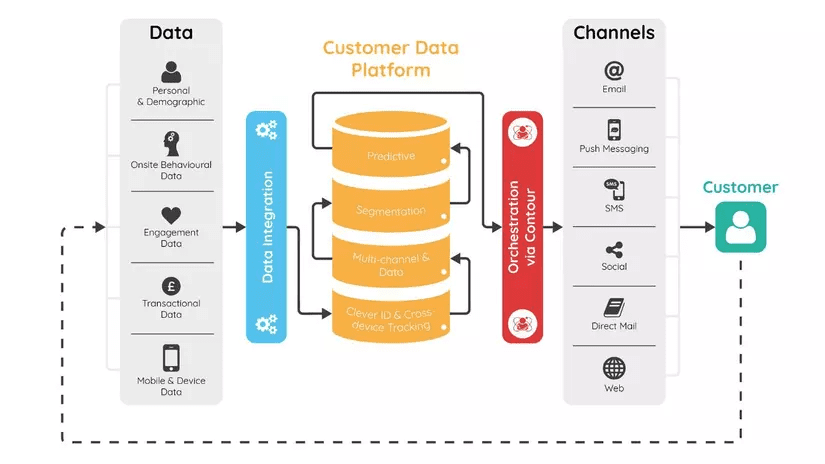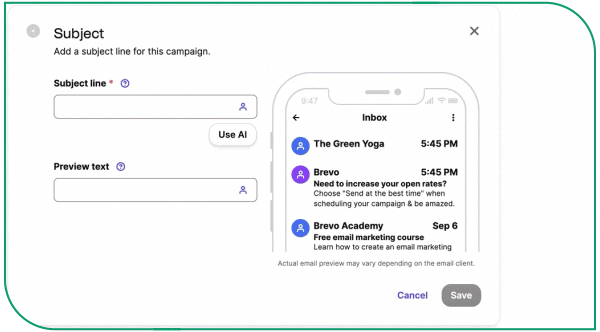As we enter 2024, the mantra for success remains unchanged — The future belongs to those who know their customers best. One of the most effective ways to understand customers is to invest in customer intelligence (CI).
Thanks to the Internet of Things, customer data is rapidly becoming richer. But more data shouldn’t overwhelm your marketing efforts.
Use AI and data management tools to take advantage of your customer data network and develop intelligence. For successful marketing, understanding your customers’ needs and preferences is paramount.
Deepen your customer intelligence with these four best practices. They will propel your marketing strategy forward in 2024.
Table of contents
Use AI for deeper customer insights
More than 60% of marketers use AI in their marketing activities. AI provides insight into both your everyday tasks and larger processes and also gives your teams the space they need to gather their own intelligence. Take advantage of these insights to optimize your strategy.
Enable your team to gather insight
Use AI to help your marketing teams with everyday tasks and let them focus on what really matters.
McKinsey projects that generative AI could automate activities that currently take up 60 to 70% of worker time. Lead scoring and data crunching are the types of activities that should streamlined.
Not only will AI support decrease the workload, but it will also empower your team to work more on what’s important. The result is more time for in-person interactions, such as events and strategy development. Essentially, your team is free to gather customer intelligence where AI can’t.
For more insight into using AI to maximize engagement, you can watch our webinar, The Multiplier Effect of AI.
Enrich your customer understanding
Beyond understanding trends in the general public, it can also deepen your understanding of your own customers. AI is so good at this that 68% of executives already integrate AI and analytics into their strategy.
AI can analyze your website and campaigns to see what customers click on and where they spend their time. Patterns in activity can reveal popular items and even areas of confusion.
The more you understand your customers’ needs and behaviors, the more predictive action you can take along the customer journey. Knowing when to send a campaign or what products to recommend makes it more likely your customers choose you and not one of your competitors.
As great as this all sounds, in order to get there, your AI needs high-quality customer data.
Establish a unified customer view
Your customers interact with your brand on many devices and often in person. And they expect you to be able to follow. The problem here is that not all these touchpoints are obviously linked to the same person.
Understanding data is a significant roadblock to marketing success. 87% of marketing teams say they rely at least in part on data people to get the insights they need.
Fragmented customer data leads to poor marketing decisions and bad customer experiences. But, with a way to unify all these data sources, data becomes an incredible opportunity.
Develop intelligence with customer data platforms (CDP)
The key to unifying customer data is a customer data platform. CDPs provide your team with indispensable insights and are the foundation for informed marketing decisions.

A visualization of a customer data platform
Get unified and reliable data
Customer data platforms take data from connected touch points and data sources and unify it into a single customer profile.
For example, they take data from your CRM and online store. They then clean duplicate information. This ensures your profiles are a reliable source of truth across your tech stack.
Hyperpersonalize your interactions
You can also use your CDP to enrich and segment customer profiles at scale.
Instead of looking through a customer’s spending history, you can simply have your CDP score each customer for their average order value. Once made, scores appear for every profile.
Now that marketers can see all customer insights at a glance, they can make more informed decisions. Your team can adjust pricing and discounts for different audiences and further personalize messaging.
Do customer analytics
CDPs connect to your CRM and customer-facing software, but they can also feed your business intelligence (BI) and analytics tools. Sync tools like Metabase or Google Analytics and extract actionable insights and monitor success.
You can measure the effectiveness of your different marketing channels and campaigns. Or predict how likely customers are to churn. These insights will help you decide where to put more resources and what needs improving.
Deliver the right action at the right time
Customers expect a personalized experience and now is the moment to deliver. You understand your customers inside and out and have AI tools to put this data to use. The final step is to polish your approach.
The good news? AI can handle that too.
If you’re using a CRM like Brevo, you already have AI assistance right within the platform. Drive engagement and set your campaigns up for success with tailored content and predictive actions.
Enhance campaign content
AI can generate creative content, but it can also tailor this content to your customers’ preferences. This is the real key use case for AI as a creative tool.
Brevo’s AI Assistant, for example, can draw on persuasive techniques to adapt the tone of voice in your email subject lines. (Which is free to use for everyone).

Brevo’s AI Assistant creating subject lines
Coming up in Q4, these powers will extend to email campaign body content. Marketers will just have to prompt AI and give the results a human read-over to create campaign content.
Once the content is prepped, you can further personalize the campaign using AI insights. Send product recommendations based on browsing history or past purchases. This will ensure your customers are getting the most relevant messages possible.
Optimize open rates
An email sent during someone’s 2PM meeting isn’t very likely to get opened. Instead, use AI to schedule campaigns to send at the best time for each contact using send time optimization.
Send time optimization tracks each recipient’s opening patterns and sends your campaign at the optimal hour.
What’s better than a personalized offer to go with your afternoon cup of coffee?
Be vigilant when moving forward with AI
While AI is immensely helpful, it’s not all a quick fix to all your bottlenecks. The improper use of AI can land you with fines or pose security threats.
Be aware of regional AI laws
Laws around what AI can and can’t do aren’t the same around the world.
When choosing AI apps to sync with your business tools, pay attention to what country it comes from. Laws in the US aren’t as strict as European regulations, so doing a bit of research beforehand can pay off in the long run.
Look out for shadow AI at the workplace
Your team is already using AI, even if you don’t know it. Don’t let important data leak into open AI.
The last thing you want is for your private company or customer data to find its way to the general public. You also don’t want to get stuck with intellectual property fines.
To avoid issues, clearly define acceptable tools and use cases. Having a company-wide training session will make sure all of your employees are on the same page.
Enhance human work, don’t replace it
AI-generated content can sometimes be bland or lack that creative spark needed to connect with an audience. This can lead to lower engagement and SEO performance compared to content created by human professionals.
In short, make sure your team reviews AI-generated content for quality and adjusts when needed.
Key takeaways for setting up customer intelligence
We have the tools for understanding our customers on a deeper level right at our fingertips. Used together, they offer unparalleled opportunities for optimizing the customer experience and improving marketing.
Going forward into 2024, remember these takeaways.
- Be ready to use AI. And as you do, stay up to date on legal developments and workplace best practices.
- Knowledge is power. Make sure you have a CDP or a plan to know your customers well.
- Leverage data. Now that you know your customers, make an impactful customer experience! Meet them where they are with messaging and actions that are tailored specifically for them.
- Keep benchmarks to help measure impact. To know if your customer intelligence strategy is working for you, measure your performance before and after introducing new tools and workflows.
We hope these insights will empower you to connect with your customers like never before.
Find these points relevant to your own experience? Share this article and your thoughts on LinkedIn. We’d love to hear from you!






